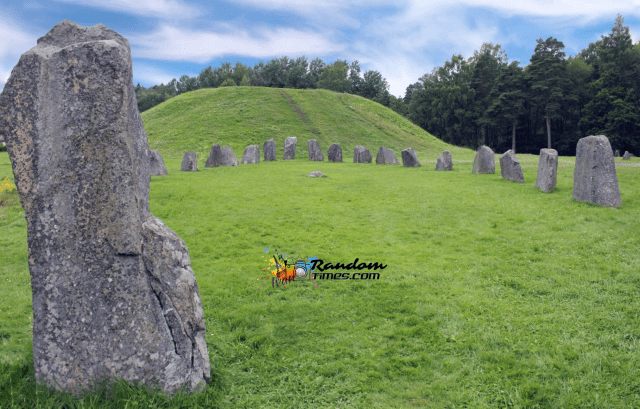Anundshög – the Sweden’s largest burial mound, allegedly belonging to a mythical king
3 min read
We are in Sweden, near Västerås in Västmanland.
Scandinavia is full of burial mounds, runestones, and any sort of ancient graves. Similar to the Egyptian pyramids, great rulers were honored with these grand burial mounds as the correct ritual was important for the deceased to reach the afterlife.
At 9 meters high and 60 meters in diameter, Anundshög (also know as Anundshögen and Anunds hög) has the largest burial mound in Sweden, which is often associated with Anund, a semi-legendary mid-7th-century Swedish king from the House of Yngling. His name would have been “Anuwinduz” meaning “winning ancestor”.

In his Ynglinga saga, Icelandic historian Snorri Sturluson relates that Anund succeeded his father King Yngvar who fell in battle. After his father’s wars against Danish Vikings and Estonian Vikings, peace reigned over Sweden and there were good harvests. Anund was a popular king who became very rich, not only because of the peace and the good harvests but also because he avenged his father in Estonia. The country was in fact ravaged far and wide and in the autumn Anund returned with great riches. If in those days Sweden was dominated by vast and uninhabited forests, Anund started making roads and clearing land, so vast districts were settled by Swedes.
Apparently, one autumn, King Anund was travelling between his lands and came to a place called Himinheiðr (sky heath) between two mountains. He was surprised by a landslide which killed him.
However, the original text of Ynglingatal is hard to interpret, and it only says that Anund died und Himinfjöllum (under the sky mountains) and that stones were implied. According to Historia Norwegiæ, he was murdered by his brother Sigvard in Himinherthy. So, he may also have been killed outdoors, by his brother and with a stone.

In any case, the entire site of Anundshög can be described as Viking memorial though, with the oldest monuments dating back to the 3rd-century. Numerous graves and markings can be found across the grassy complex, with 12 burial mounds, 10 stone circles, 14 monoliths, a runestone, and five stone ships. The largest of which is 53 meters long and 16 meters wide.
If assessments of the era of the mound vary between the Bronze Age and the late Iron Age, a fireplace under it has been dated by radiocarbon dating to sometime between AD 210 and 540.
Despite some historians have associated the mound with the legendary Anund himself, others regard this as speculative. It is purported also that the name is taken from the large runestone at the site, (Vs 13) the central stone in a row of 15 alongside the mound, re-erected in the 1960s and apparently marking out the route of the “Eriksgata”, the term of the traditional journey of the newly elected medieval Swedish kings through the important provinces to have their election confirmed by the local assemblies.
The inscription on the runestone reads:
+ fulkuiþr + raisti + stainn + þasi + ala + at + sun + + sin + hiþin + bruþur + anutaR + uraiþr hik + runaR
“Folkvid raised all of these stones after his son Heden, Anund’s brother. Vred carved the runes.”
The mounds and ships were damaged during the 19th century and, prior to that, were partially damaged by looters looking for riches.
However, still today, the site is the country’s most visited ancient burial ground as well as its best maintained.
Author’s notes: the site is freely accessible and has informative signs in several languages like Swedish, English, German and French. You also can go for guided tours arranged by Västerås Tourist Centre, or grab a bite at Café Anund if you are feeling hungry, and contemplate the ruins from your seat.








